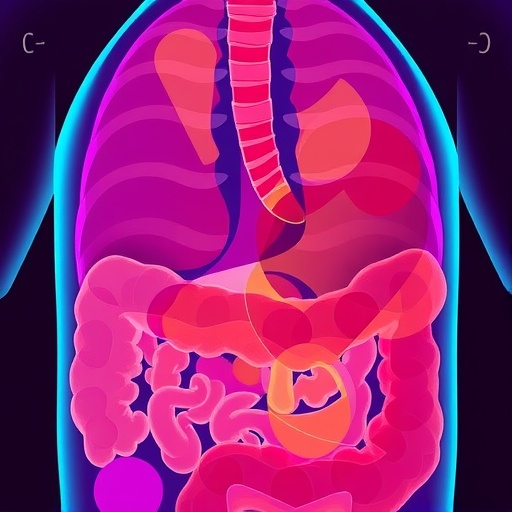In a groundbreaking review published in Acta Pharmaceutica Sinica B, researchers have shed new light on the formidable challenges faced in the targeted treatment of brain metastatic non-small cell lung cancer (NSCLC). Despite significant advances over the past two decades in developing inhibitors targeting key oncogenic drivers like EGFR, ALK, ROS1, and KRAS^G12C, patients with brain metastases from NSCLC continue to experience dismal survival outcomes compared to those without central nervous system involvement. The paper delves deeply into the intricate mechanisms behind drug resistance and the biological barricades posed by the blood–brain barrier (BBB), both crucial hurdles obstructing effective therapeutic intervention.
Targeted therapies have revolutionized the management of NSCLC, particularly in patients harboring specific genetic alterations driving tumor growth. The adoption of tyrosine kinase inhibitors (TKIs) that selectively inhibit mutant EGFR, ALK rearrangements, ROS1 fusions, and the emerging KRAS^G12C mutations has extended progression-free survival considerably. Unfortunately, brain metastases remain a frequent and devastating complication, complicating treatment strategies profoundly. The persistent issue is that the BBB — a tightly regulated endothelial interface designed to protect the brain’s microenvironment — severely limits drug penetration, thwarting effective drug concentrations from reaching metastatic tumor cells in the brain.
The review highlights the evolving understanding of the BBB’s role in drug resistance, focusing on ATP-binding cassette (ABC) transporters such as ABCB1 (P-glycoprotein) and ABCG2 (breast cancer resistance protein). These efflux pumps actively extrude many targeted inhibitors back into the bloodstream, significantly reducing their intracerebral accumulation. Preclinical models demonstrate that even the most innovative inhibitors can be substrates for these transporters, underlining a critical pharmacokinetic obstacle. This dual challenge of genetic resistance within tumor cells and physiological exclusion by the BBB necessitates novel pharmacological strategies and drug designs to improve brain penetrance without compromising systemic efficacy.
A particularly troubling issue is the emergence of secondary resistance mutations within the kinases targeted by inhibitors. Tumors frequently acquire alterations that diminish inhibitor binding or activate bypass signaling pathways, resulting in therapeutic failure. The review meticulously reviews recent clinical trial data showing that next-generation inhibitors, designed to overcome common resistance mutations, have yielded improved progression-free survival and better control of brain metastases. These later-generation agents demonstrate a combination of higher potency, more diverse mutation coverage, and in some cases, enhanced permeability across the BBB, positioning them as the front-runners in current and future NSCLC brain metastasis treatment paradigms.
Despite these advancements, the review underscores that resistance remains inevitable, highlighting the urgent need for combination therapies and new drug modalities. Emerging evidence points toward integrating targeted therapies with agents modulating the tumor microenvironment, including immunotherapies and BBB-disrupting approaches, to facilitate more effective intracranial drug delivery and sustain long-term disease control. Furthermore, patient stratification based on molecular profiling of both systemic and brain metastatic lesions is paramount for tailoring personalized treatment plans that account for intratumoral heterogeneity and resistance evolution.
The paper also explores the complex pharmacodynamics behind differential drug efficacy in brain metastases. Concentrations of targeted inhibitors in brain tissue often fail to reach therapeutic thresholds despite adequate systemic exposure, raising questions about dosing regimens and toxicity management. Consideration of the BBB’s selective permeability and active transport systems is pivotal when designing clinical trials and interpreting outcomes. Innovative imaging methods and cerebrospinal fluid biomarkers are emerging tools to noninvasively monitor drug distribution and response within the central nervous system.
In addition, the authors detail recent breakthroughs in medicinal chemistry that aim to engineer molecules with optimized physicochemical properties for BBB penetration, such as reduced molecular weight, increased lipophilicity, and minimized affinity for efflux transporters. Structure-based drug design and advanced in vitro BBB models have accelerated the screening process for potential candidates exhibiting superior intracerebral bioavailability. These technological advances bode well for the pipeline of future EGFR, ALK, ROS1, and KRAS^G12C inhibitors targeting brain metastases.
Crucially, the review emphasizes the importance of understanding the interplay between acquired resistance mutations and the BBB’s protective mechanisms. While new inhibitors overcome some resistance mutations, they may inadvertently become substrates for ABC transporters, thus limiting their brain distribution. This complicated dynamic requires a multidisciplinary approach combining molecular biology, pharmacology, and clinical oncology to devise drugs capable of circumventing both molecular and physiological resistance mechanisms simultaneously.
In conclusion, the fight against brain metastatic NSCLC remains an urgent unmet medical need. The insights provided in this review present a comprehensive blueprint for overcoming current barriers through next-generation targeted therapies, strategic drug delivery improvements, and sustained research into resistance mechanisms. While the journey toward significantly extending survival in this patient population is arduous, the convergence of precision medicine, innovative chemistry, and neuropharmacology holds promise for transformative breakthroughs in the near future.
Subject of Research: Challenges and advances in targeted treatment of brain metastatic non-small cell lung cancer, focusing on resistance mutations and blood–brain barrier dynamics.
Article Title: Resistance mutations and the blood–brain barrier: Key challenges in targeted treatment of brain metastatic non-small cell lung cancer
News Publication Date: Not provided
Web References:
https://www.sciencedirect.com/journal/acta-pharmaceutica-sinica-b
DOI: 10.1016/j.apsb.2025.06.002
Keywords: ABC transporters, Blood–brain barrier, Brain metastases, NSCLC, Drug resistance, Targeted therapies




